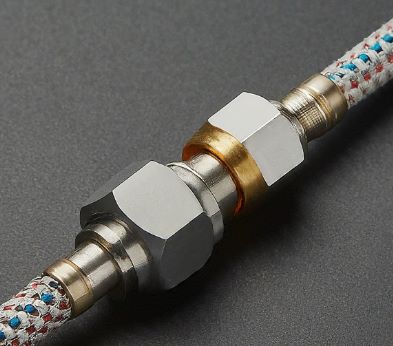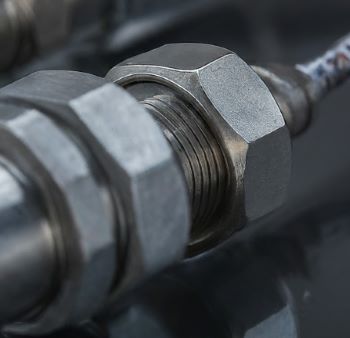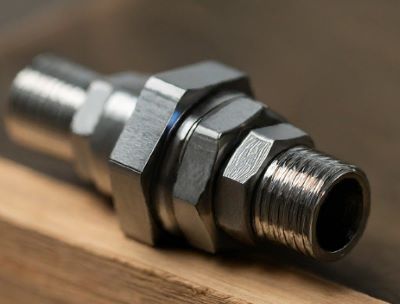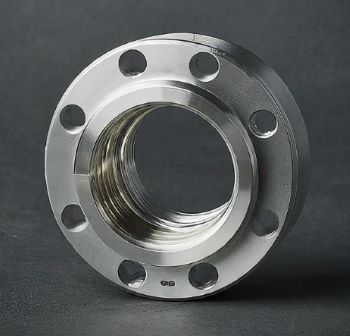Pneumatic systems are the workhorses of many industries. They power everything from factory automation to medical equipment. These systems rely on compressed air to work. Pneumatic fittings are crucial. They ensure the systems work well and don’t break.
This guide will give you the knowledge to navigate the world of pneumatic fittings. It covers understanding types, making informed choices, and ensuring proper use.
What are Pneumatic Fittings?
Pneumatic fittings are special connectors. They are used to join tubes, hoses, and pipes in pneumatic systems. These systems use compressed air or gas to power many functions. They range from industrial machinery and factory automation to medical equipment. They even power everyday tools like nail guns and paint sprayers.
Pneumatic Fitting Types
The first step to understanding pneumatic fittings is knowing the different types available. Here’s a breakdown based on connection method and material:
Classification by connection type:
1. Push-to-connect: These user-friendly fittings allow for quick and easy connection of tubes and hoses by simply pushing them in. A locking mechanism secures the connection, creating a reliable seal.
2. Threaded: Threaded fittings offer a secure and permanent connection. They come in various thread types. These include the British Standard Pipe (BSP) and National Pipe Thread (NPT). Each type is suited for specific uses.
3. Barb: Barb fittings feature a barbed end that inserts into a hose. They require clamps to secure the connection and are suitable for low-pressure applications.
4. Flange: Flanged fittings are heavy-duty connectors used in high-pressure applications. They involve bolting together two flanged components, creating a robust and leak-proof connection.
The material of your pneumatic fittings is crucial. It ensures system compatibility and performance. Common materials include:
➡️ Brass: A popular choice for its affordability, corrosion resistance, and machinability. However, it may not be suited for applications requiring high pressure or temperature.
➡️ Nylon: Offers excellent chemical resistance, making it ideal for applications involving harsh chemicals or fluids. It’s also lightweight and cost-effective but may not be as strong as brass or stainless steel.
➡️ Stainless steel: The premium choice for high-pressure, high-temperature, and corrosive environments. It offers superior strength, durability, and resistance to chemicals.
Essential Considerations for Selecting Pneumatic Fittings
First, understand the types and materials. Then, consider these key factors when choosing pneumatic fittings:
A. Pressure and temperature ratings: It’s vital to choose fittings with ratings exceeding your system’s operating pressure and temperature. Exceeding these ratings can lead to leaks, failures, and even safety hazards. Look for the pressure and temperature specs on the fitting. You can find them on the fitting itself or the manufacturer’s datasheet.
B. Tube and hose compatibility: Ensure the fittings are designed for the specific type and size of tubing or hose you’re using. This ensures proper fit and prevents leaks. Common size designations include inches and millimeters.
C. Flow considerations: The design of the fitting can impact the flow rate and pressure drop within your system. For critical applications, consider using fittings that minimize flow restrictions.
Advanced Tips for Using Pneumatic Fittings
Good installation and maintenance are essential. They ensure your pneumatic system lasts and works well.
A. Proper installation techniques: Always follow the manufacturer’s instructions for proper installation. This involves using the right tools. You must cut hoses squarely and ensure a clean, dry connection.
B. Maintenance and troubleshooting: Regularly inspect your fittings for leaks, wear, and damage. Replace any damaged fittings promptly to prevent system failures. Consult the manufacturer’s recommendations for maintenance and replacement schedules.
Conclusion
You can ensure your pneumatic system works smoothly and reliably. To do this, understand types for fitting. Choose the right material. Also, follow proper practices for installation and maintenance.
If you have questions or need help picking fittings, ask a professional. Or, check the manufacturer’s resources for more help.
Post time: Apr-22-2024





